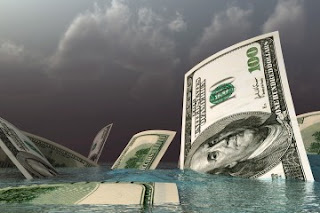Why the Dollar's Reign Is Near an End
Barry Eichengreen
The Wall Street Journal
The single most astonishing fact about foreign exchange is not the high volume of transactions, as incredible as that growth has been. Nor is it the volatility of currency rates, as wild as the markets are these days.
Instead, it's the extent to which the market remains dollar-centric.
Consider this: When a South Korean wine wholesaler wants to import Chilean cabernet, the Korean importer buys U.S. dollars, not pesos, with which to pay the Chilean exporter. Indeed, the dollar is virtually the exclusive vehicle for foreign-exchange transactions between Chile and Korea, despite the fact that less than 20% of the merchandise trade of both countries is with the U.S.
Chile and Korea are hardly an anomaly: Fully 85% of foreign-exchange transactions world-wide are trades of other currencies for dollars. What's more, what is true of foreign-exchange transactions is true of other international business. The Organization of Petroleum Exporting Countries sets the price of oil in dollars. The dollar is the currency of denomination of half of all international debt securities. More than 60% of the foreign reserves of central banks and governments are in dollars.
The greenback, in other words, is not just America's currency. It's the world's.
But as astonishing as that is, what may be even more astonishing is this: The dollar's reign is coming to an end.
I believe that over the next 10 years, we're going to see a profound shift toward a world in which several currencies compete for dominance.
The impact of such a shift will be equally profound, with implications for, among other things, the stability of exchange rates, the stability of financial markets, the ease with which the U.S. will be able to finance budget and current-account deficits, and whether the Fed can follow a policy of benign neglect toward the dollar.


2 years max - and more likely within 10 MONTHS...